The small historic mountain town of Fernie BC, surrounded by the majestic peaks of the Rocky Mountains, is well-known as a world-class destination for skiing and mountain biking. Despite this it often finds its incredible hiking trails overlooked. From panoramic mountain peaks to pristine lakes and gushing waterfalls, there’s an abundance of beautiful natural scenery surrounding Fernie, and the many hiking trails that access it offer something for anyone.
Continue reading this blog post for everything you need to know to experience these awesome Fernie hikes for yourself, including distance, elevation gain, how to get there, the best time to visit, and lots of photos of my experience.
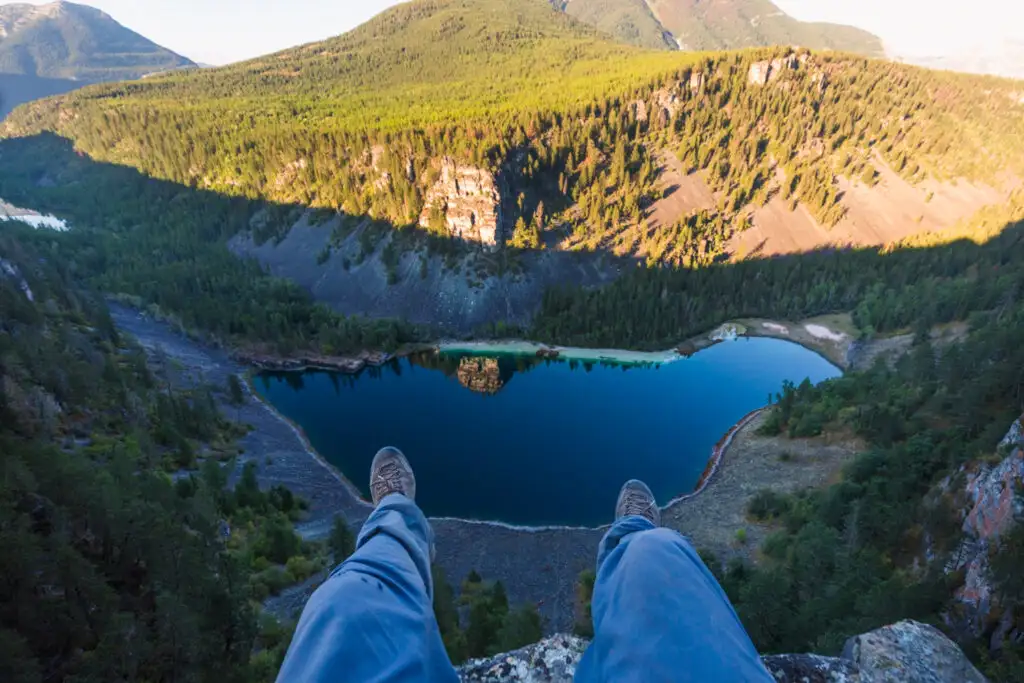
Tips for Hiking in Fernie
When in the outdoors it’s important to avoid harmful practices such as disturbing plants or rock-stacking, or removing any natural object from flowers to rocks, as it’s important to leave the environment as natural as possible for the animals and for fellow hikers to enjoy in perpetuity. As many flowers as there are, there are few enough that if we all took one, then there wouldn’t be any left. Take only photos, leave only footprints.
I also highly recommend reading up on Leave No Trace principles before heading anywhere into the outdoors in general. Following these important principles basically means doing your best to leave beautiful places like these Fernie hikes as good (if not better) than you found them, both for their preservation and for the enjoyment of other visitors.
Best Fernie Hikes
Mt Fernie Ridge

Distance: 8.7 KM / 5.4 MI
Elevation Gain: 933 M / 3061 FT
Hiking Time: 4-5 HRS
Mt Fernie Ridge is one of the most iconic hikes in the Fernie region, and is visible from most of town. This hike is a bit of a grind, as it climbs pretty steeply uphill with no real views until above the tree line near the end of the hike. The views from the end of the Mt Fernie Ridge hike are well worth it though, offering spectacular views down over the town as well as to the north towards Fernie’s iconic Three Sisters.
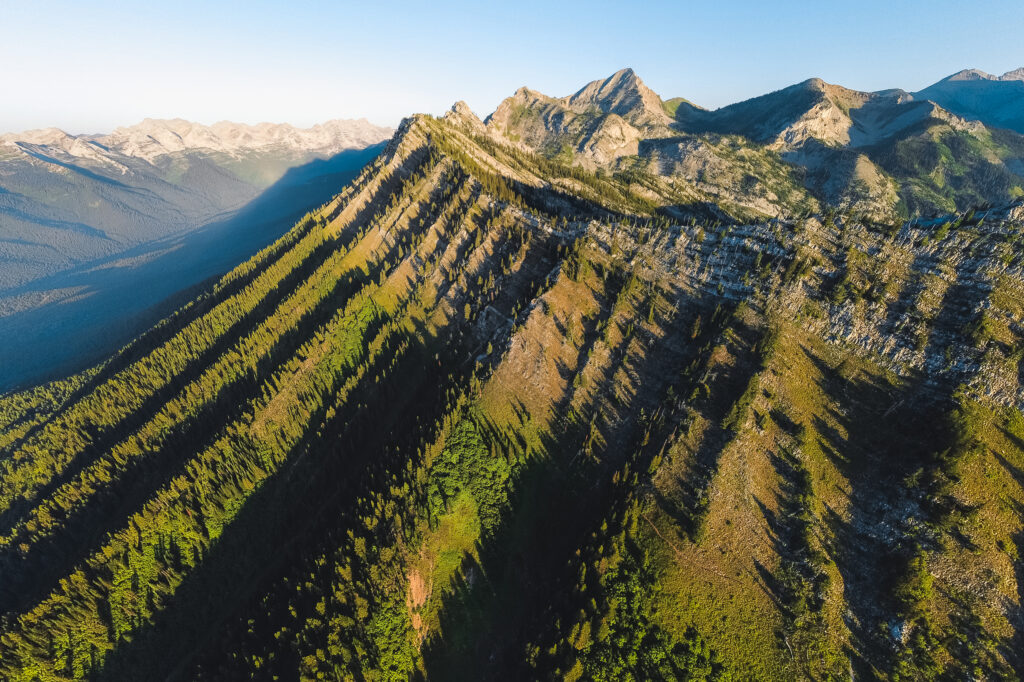
Castle Mountain

Distance: 10.5 KM / 6.5 MI
Elevation Gain: 575 M / 1886 FT
Hiking Time: 3 Hrs
Castle Mountain is one of the best Fernie hikes for those looking for spectacular panoramic views of the Elk Valley without hiking up for at least 1000 m. Fernie’s Castle Mountain trail is one of the easier and shorter mountain hikes in the region, making it perfect for those with limited time. The trail is shared with mountain bikers for the lower stretches, but near the viewpoint on top becomes hikers only. Castle Mountain is located on the east side of the valley, meaning that from the top it’s possible to view almost all of Fernie’s iconic peaks, most of which are located on the west side.
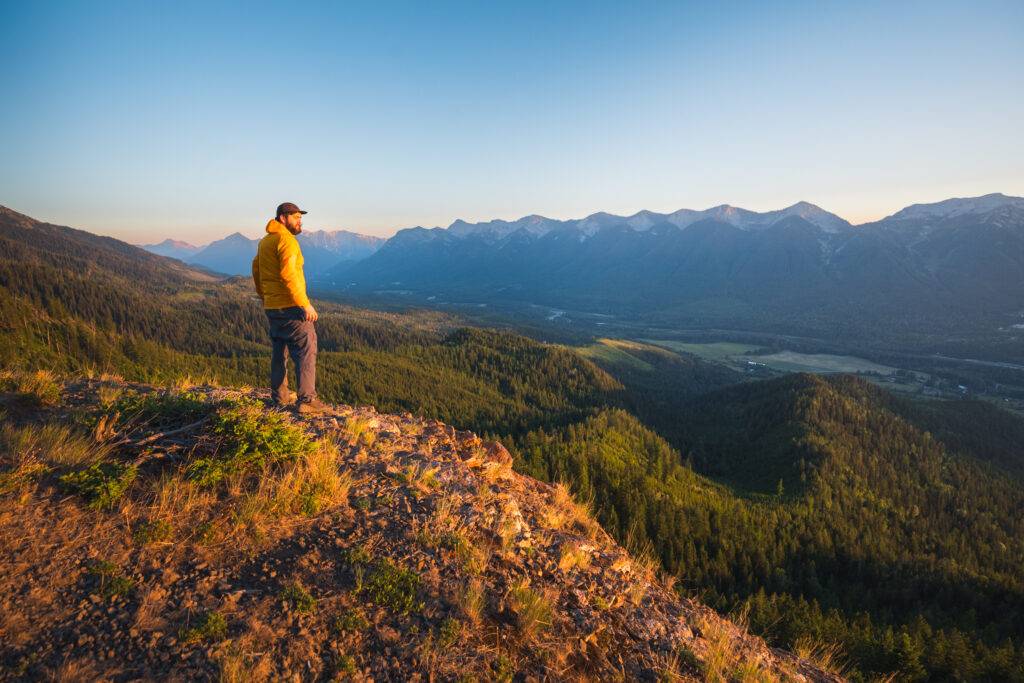
Fairy Creek Falls
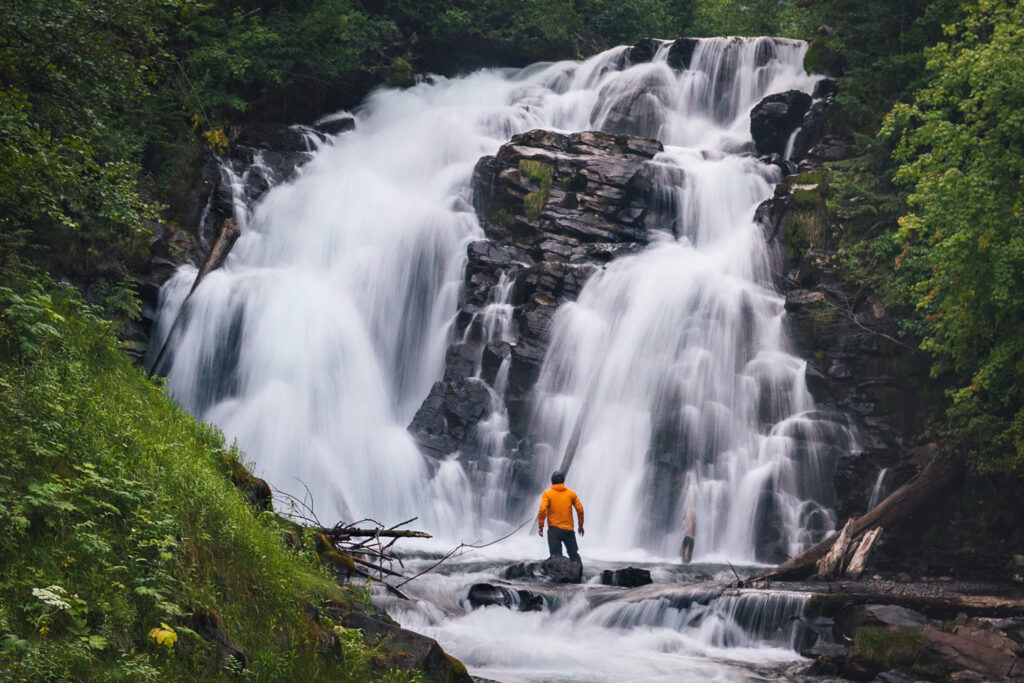
Distance: 4.8 KM / 2.9 MI
Elevation Gain: 90 M / 295 FT
Hiking Time: 1.5-2 HRS
The short and relatively easy trail to fairy Creek Falls is one of the most well-known and popular hikes in Fernie. It’s a family-friendly trail that leads straight from the Fernie visitor centre, leading up along Fairy Creek to a picturesque waterfall. The trail is enjoyed by all levels of hikers year-round, and is even extendable into a trip up Mt Proctor for those looking for a real challenge.
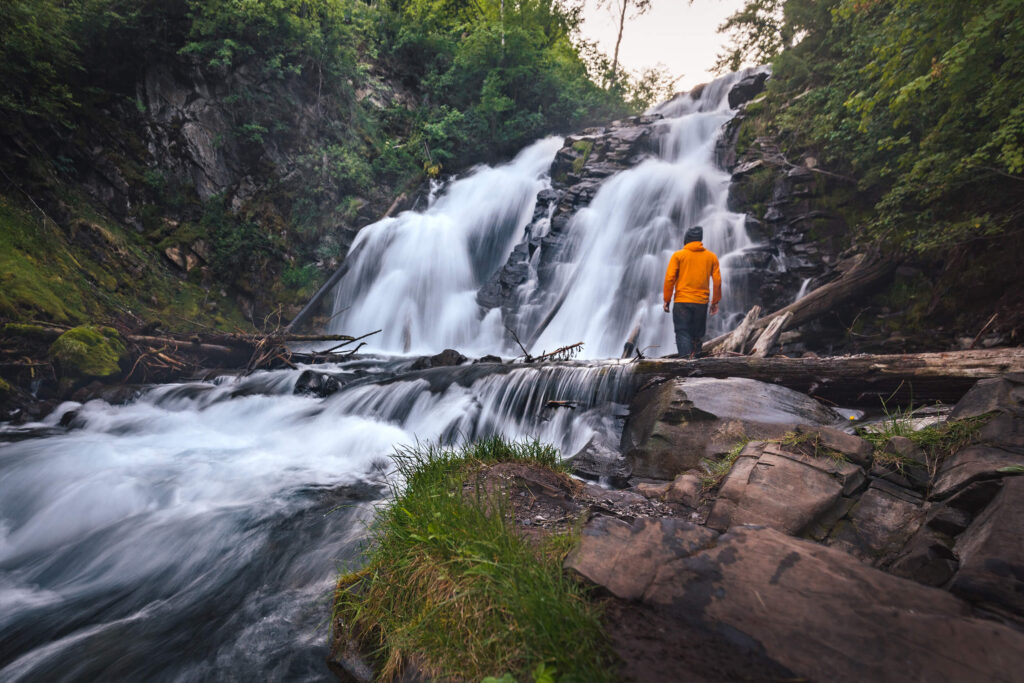
Spineback Trail

Distance: 3.6 KM / 2.2 MI
Elevation Gain: 520 M / 1706 FT
Hiking Time: 2-3 HRS
The Spineback Trail is one of the few Fernie trails that leads hikers up into the pristine wilderness of the Lizard Range west of the town. Starting from Island Lake Lodge, this privately owned trail is well-maintained and free to access. It’s also one of the easiest Fernie hikes with mountain views, making it one of the best Fernie hikes for families.
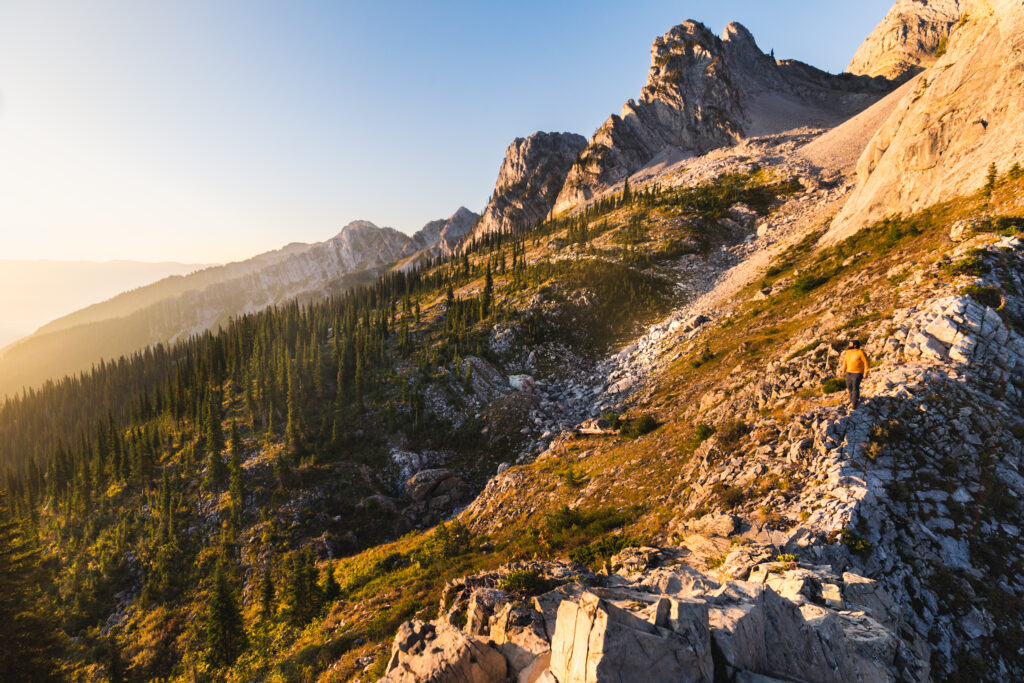
Silver Spring Lakes
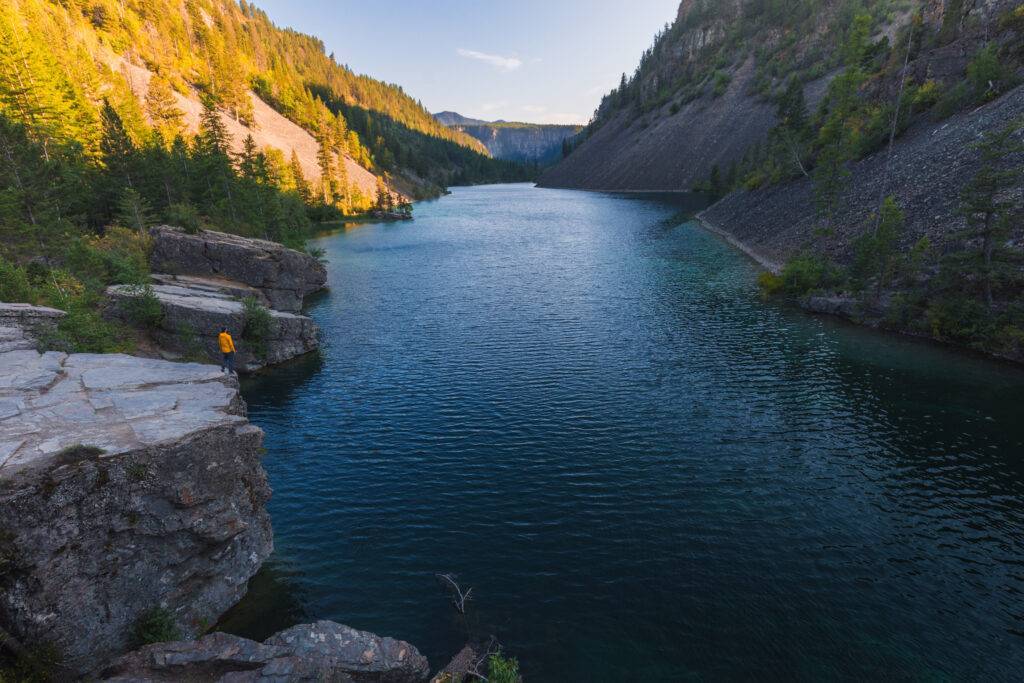
Distance: 7 KM / 4.3 MI
Elevation Gain: 200 M / 656 FT
Hiking Time: 2 Hrs
Silver Spring Lakes is arguably the best place to cool off on a hot summer day near Fernie. These three lakes are located in a beautiful valley about half an hour south of Fernie near the town of Elko. The hike up to the first lake is mostly uphill, leading to a popular cliff-jumping spot. From there the trail is fairly flat as it continues through the valley to the second and third lakes.
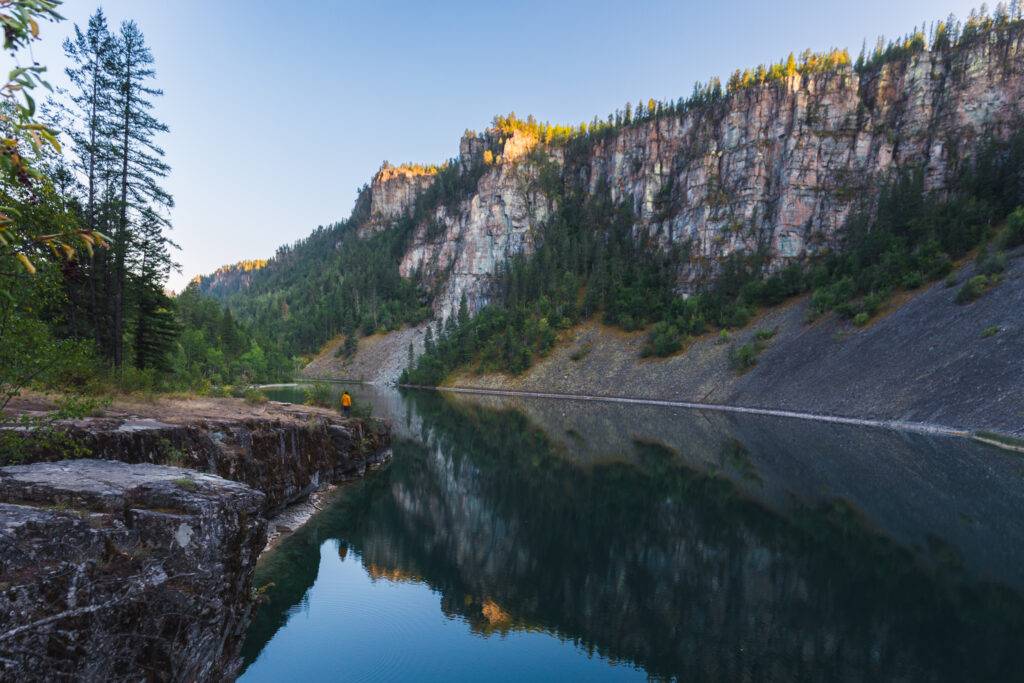
Recommended Hiking Gear



Water is a must whenever I’m hiking, especially if the sun is going to be out. My favourite water filter I’ve used is the Katadyn BeFree 0.6L, which unlike other water filters I’ve used packs up really small and lightweight. For hikes where I know there won’t be any readily available water sources along the way, I make sure to bring my own. The Hydrapak Stow 1L bottle is my go-to, for the same reason that it’s made of a soft plastic that folds up and doesn’t take up any more extra space than necessary in my pack. Finally, Aquatabs are another great option for purifying water, with one tablet being suitable for one litre of water. I previously used the Grayl water filter while travelling internationally, and though I found its hard body more convenient for day to day use and easier to drink from, it has a little too much bulk for my fast-and-light style of hiking.



The secret to all my photos of gorgeous sunset and sunrise mountaintop views? A lot of hiking in the dark. And let me speak from personal experience when I say that the last thing that you want to happen when hiking is to be caught in the dark without a headlamp. I used the Black Diamond Spot 400 for years and it worked great – until I lost it on top of a mountain somewhere. The only downside to it was having to worry about the batteries dying, though there’s also a slightly more expensive version that has a rechargeable battery. Nowadays I’m using the Petzl Actik Core, which is a bit pricier than the more budget-friendly Black Diamond, but is also brighter, more comfortable (in my opinion), and has a hybrid power system that is rechargeable but can also take AAA batteries if needed.
You won’t see me using trekking poles on shorter hikes often – but on long hikes and backpacking trips, as well as certain scrambles, they are an absolute lifesaver. I’ve invested in a high quality ultra-lightweight pair of MSR DynaLock Ascent carbon poles which, while pricey, I don’t regret one bit. If you’re not entirely sure how much use you’re going to get out of a pair of trekking poles, the best budget-friendly option would be the Trekology Trek Z 2.0. Amazon does sell a lot of cheaper Made in China-style trekking poles for cheaper, but these usually are much much heavier and not worth buying.
All the best and most long-lasting cables and power banks I’ve ever owned have been Anker. I once had a phone cable from them that lasted me over three years of daily use! That’s why I keep an Anker PowerCore Essential 20K power bank on me. Like many people I use my phone for a lot of stuff when hiking (checking in with family, using online maps, taking photos, flying my drone) so I like to be prepared for that low battery warning by having a backup power source on me just in case.



The only socks I ever buy for myself are from Darn Tough, and I almost always make sure to wear them when hiking. After years of having no problems only wearing these comfortable and rugged socks for hikes, I accidentally wore a pair of no-name socks on a hike last year and ended up with blisters on both feet. Safe to say I’m back to sticking with the Darn Tough. And the best part? They have a lifetime guarantee, meaning that if they ever wear out you can send them back for a brand new pair. For hiking footwear I go between a pair of lightweight approach shoes for quick and dirty mountain ascents or anything involving scrambling and more heavy-duty boots for longer treks. I’ve worn a couple different versions of the lightweight but super durable Arc’teryx Konseal FL 2 approach shoes for a few years now and am very impressed with the durability. I also really like the thick toecap that keeps me protected every time I stumble into a root or large rock. For longer, tougher, or muddier treks I rely on my LOWA Camino EVO GTX, which I find insanely comfortable and made of very high quality.



I wear my Ar’teryx Gamma Lightweight Pants on every single hike I go on, and on many days when I’m not hiking. After several years of abuse they are still holding together extraordinarily well, with only a few small holes from where I’ve fallen down and some slight stains from being repeatedly coated with mud. They’re lightweight, breathable, and super comfortable. For lightweight and breathable hiking tops I’m a big fan of both the Patagonia Capilene Shirt and the MEC Core Shirt. My Arc’teryx Squamish Hoody shows up in a lot of my photos. It’s super lightweight and packable, and does a great job of cutting the wind while also being pretty breathable. I also have an Arc’teryx Atom Hoody and Arc’teryx Beta LT that I pull out for cooler or wetter conditions.
